The House
Live Performance
Stefanie Knobel developed a new live performance entitled The House for her exhibition On Surfaces and Structures at the Volkarthaus. She showed this on Saturday 24 May together with Charlotte Mathiessen and Nina Richard in the prestigious atrium of the Volkarthaus. The former company headquarters of the Volkart brothers, the place from which the lucrative global business with raw cotton was controlled, is confronted with gestures of resistance and rebellion. Space is taken up, conditions are reversed. Through repetitive movement sequences based on Stefanie's practice of listening with the hyoid bone and arising from her collaboration with former textile workers, more-than-human relations open up, destabilising the fixed order and addressing what is concealed. Accompanied by a sound carpet consisting of the noises of automatic spinning machines interwoven with the sounds of river dolphins, the choreographed movements formulate a silent scream, a loud absence.
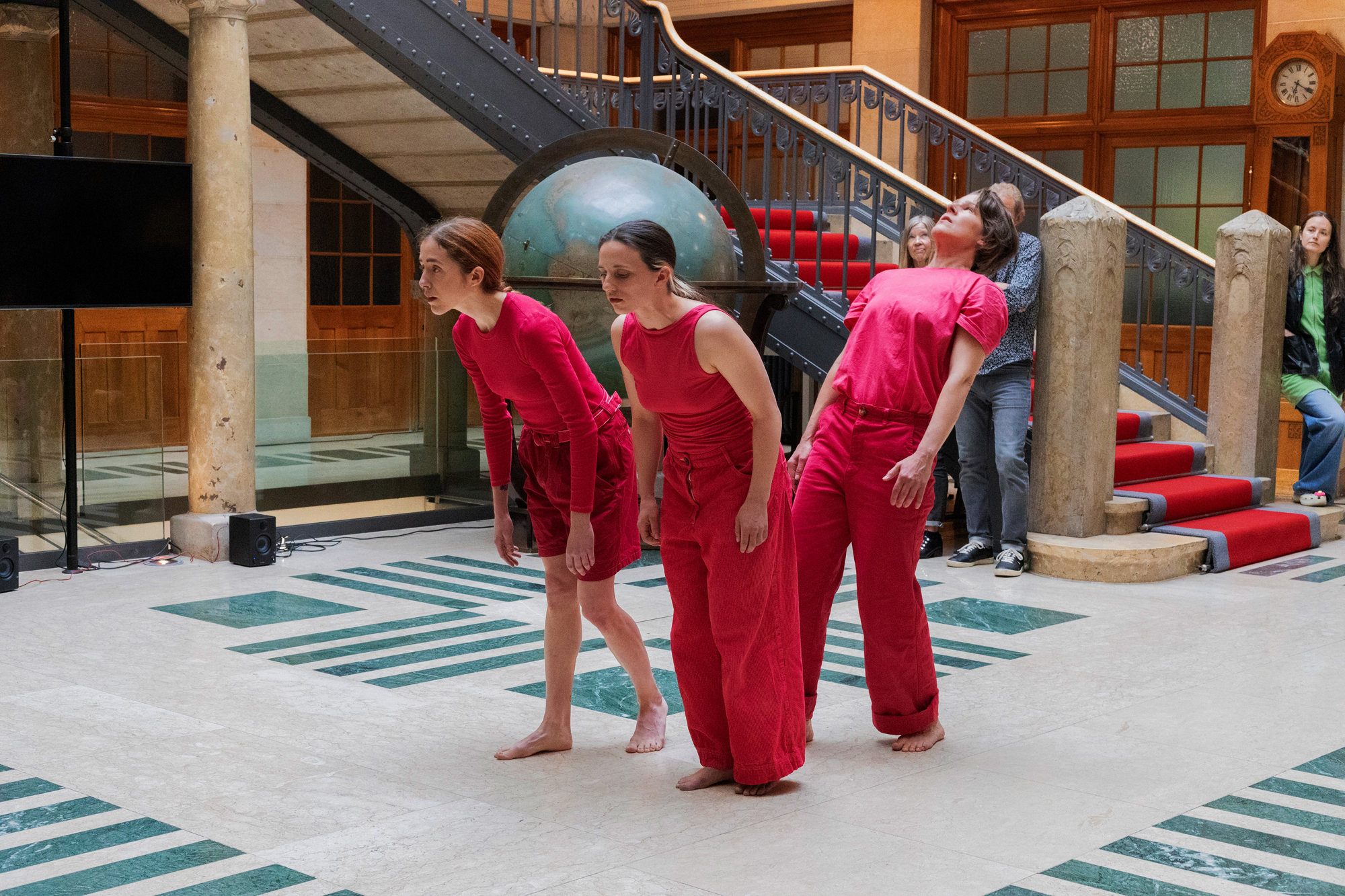
Performance view The House, On Surfaces and Structures, 2025. Photo: Guadaloupe Ruiz.
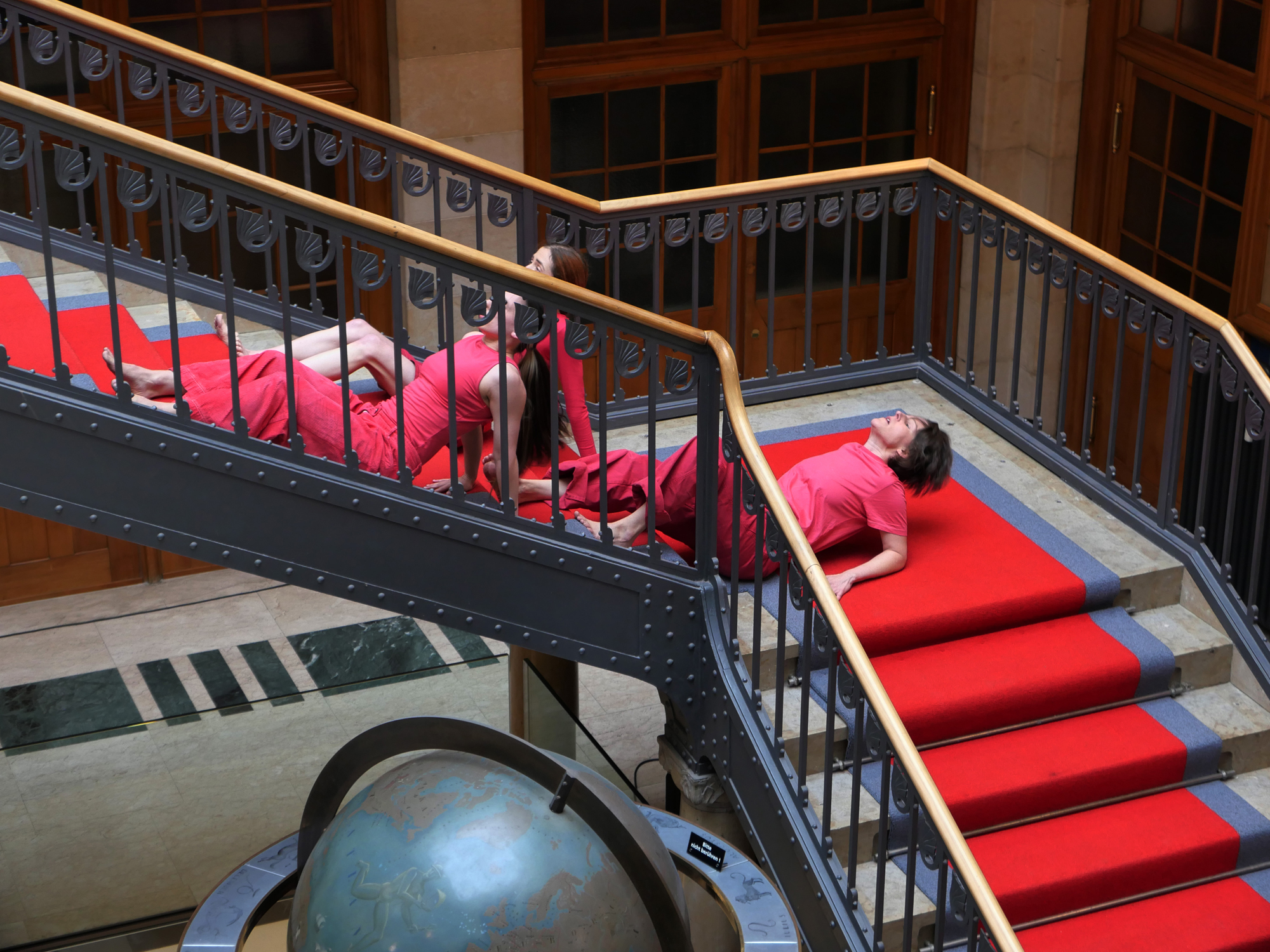
Performance view The House, On Surfaces and Structures, 2025. Photo: Guadaloupe Ruiz.
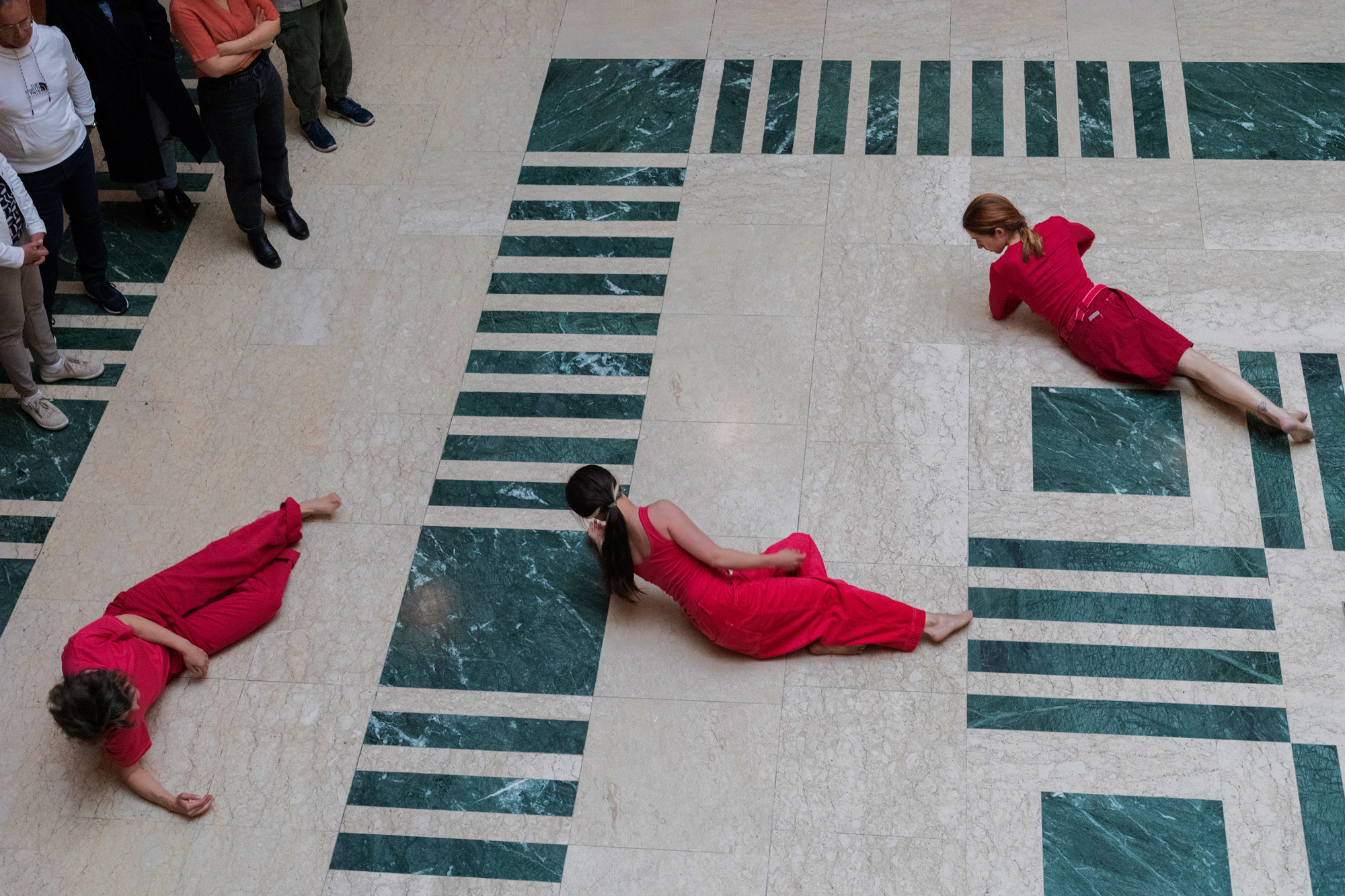
Performance view The House, On Surfaces and Structures, 2025. Photo: Guadaloupe Ruiz.
The House, 2025
Performance by and with Stefanie Knobel
with Charlotte Mathiessen & Nina Richard
Dramaturgical support for movement: Jessica Huber
Sound mix/Mastering: Vidyanand Bhaskar
with Charlotte Mathiessen & Nina Richard
Dramaturgical support for movement: Jessica Huber
Sound mix/Mastering: Vidyanand Bhaskar
Untitled
Spatial intervention
Untitled is a spatial intervention by Stefanie Knobel, created in 2025 for the Volkarthaus in Winterthur. The building was the commercial headquarters of the Volkart brothers from 1904 to 1928 and now houses the Volkart Foundation. Founded in 1851 in Winterthur and Bombay (now Mumbai) by brothers Salomon and Johann Georg Volkart, the company was active in the global transit trade of colonial goods and soon became a leader in the worldwide cotton trade, including the export of raw cotton from the Indian subcontinent.
In the basement of the Volkarthaus, the artist has covered all the white walls of the exhibition space with cotton fabric. The fabric is a hand-woven, bleached khadi cotton produced by Chandrakanta Lalitmohan in Islampur, in the Murshidabad district of the Indian state of West Bengal, which the artist had shipped to Winterthur. Khadi has its historical roots in the civil disobedience movement against British colonial rule, which boycotted cheap cotton products from Great Britain and at the same time promoted local textile production, which had been destroyed under British rule. The wall covering reflects the White Cube as a supposedly neutral exhibition space.
Between the transitions from one exhibition room to another, as well as on individual walls, there are additional aluminum plates with the terms “Import,” “Cotton Sample,” “Cotton Warehouse,” “Seeds,” “Coal Room,” “Armor Chamber,” “Archive Rooms,” and “Private.” These names come from the room designations and uses on the original plans of the Volkarthaus. In a gesture of repetition and translation, Stefanie appropriated the original writing on the plans by copying it several times by hand and finally transferring it to the aluminum plate.
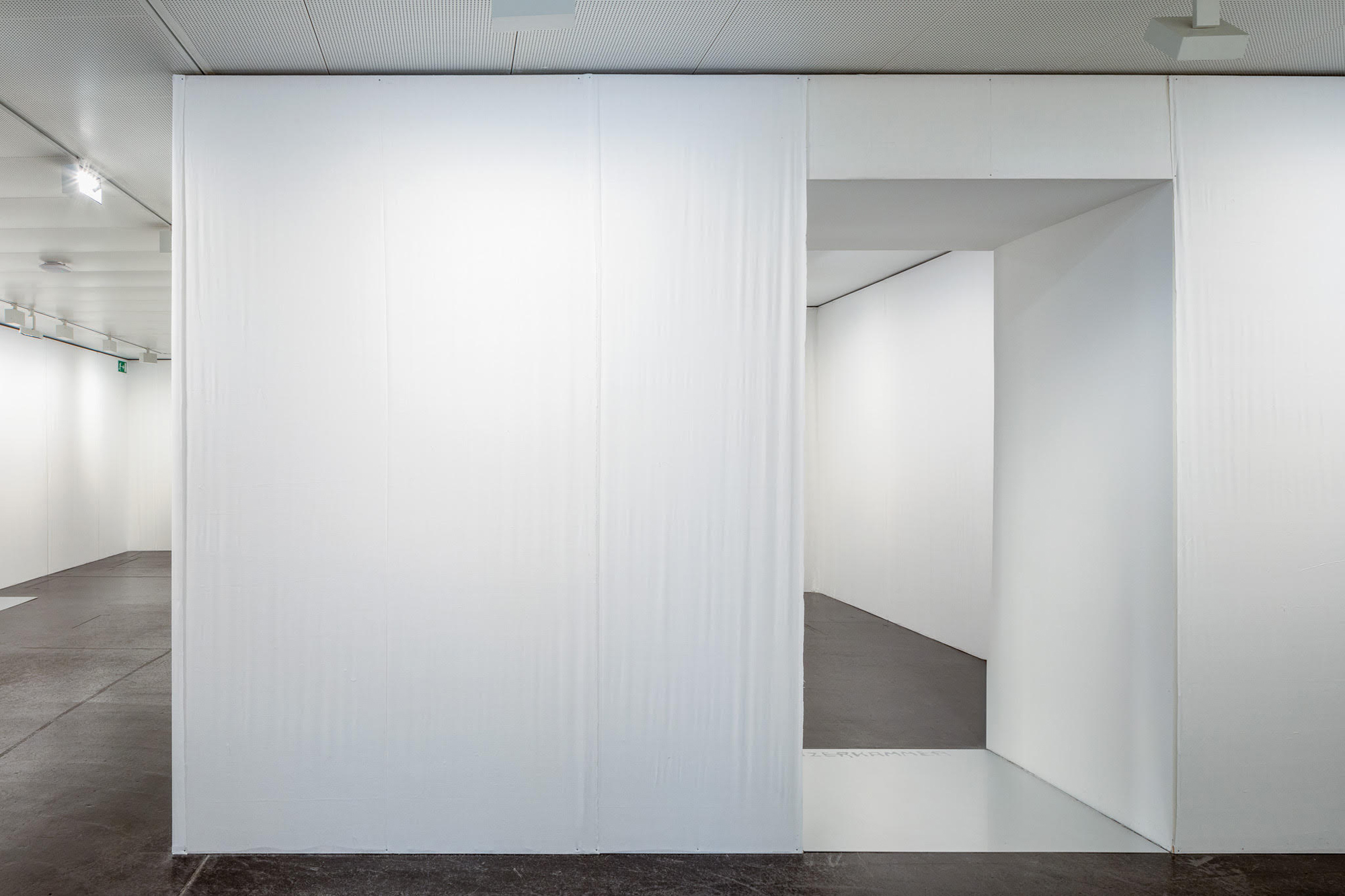
Untitled, On Surfaces and Structures, 2025. Photo: Guadaloupe Ruiz.
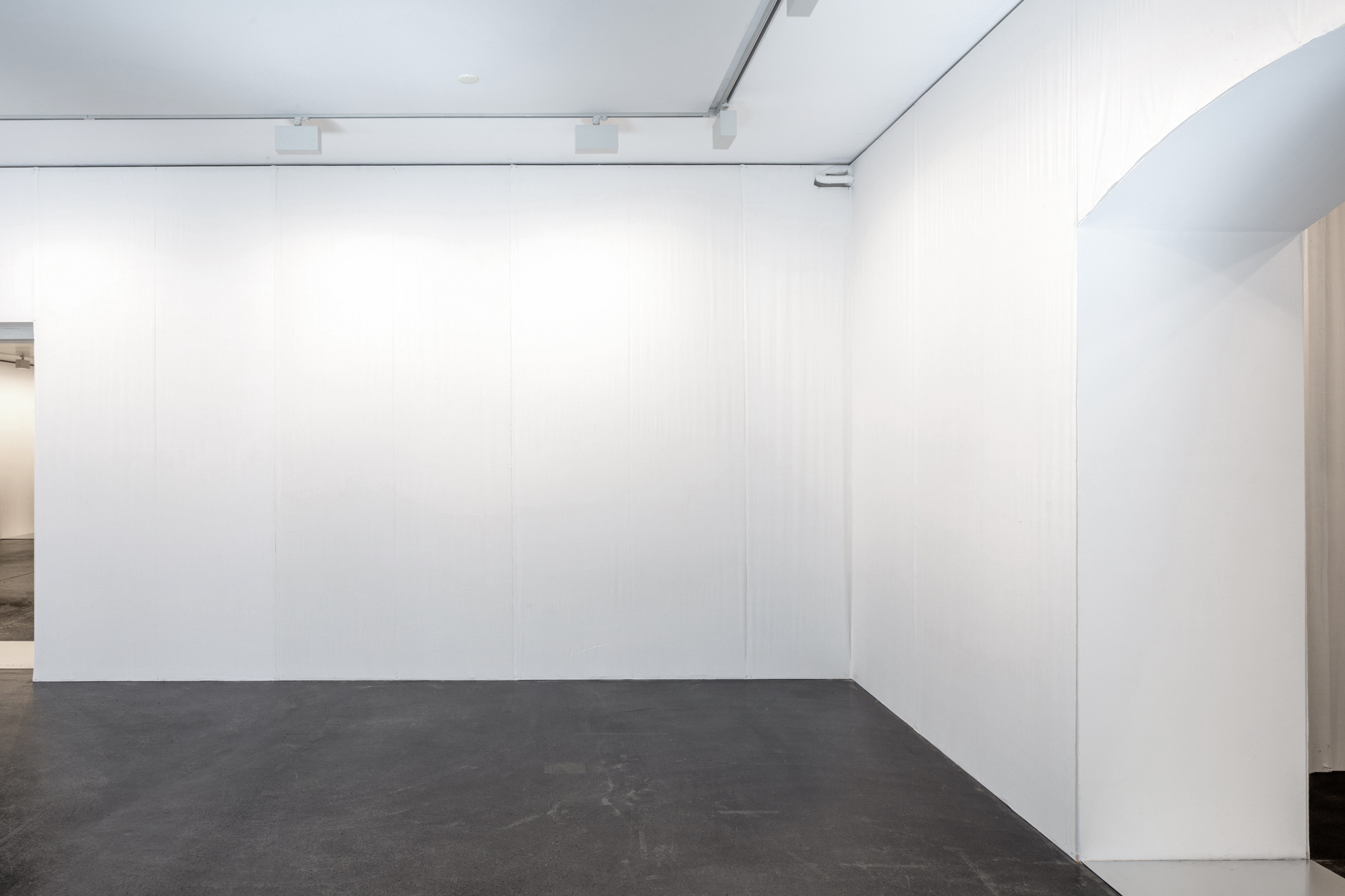
Untitled, On Surfaces and Structures, 2025. Photo: Guadaloupe Ruiz.
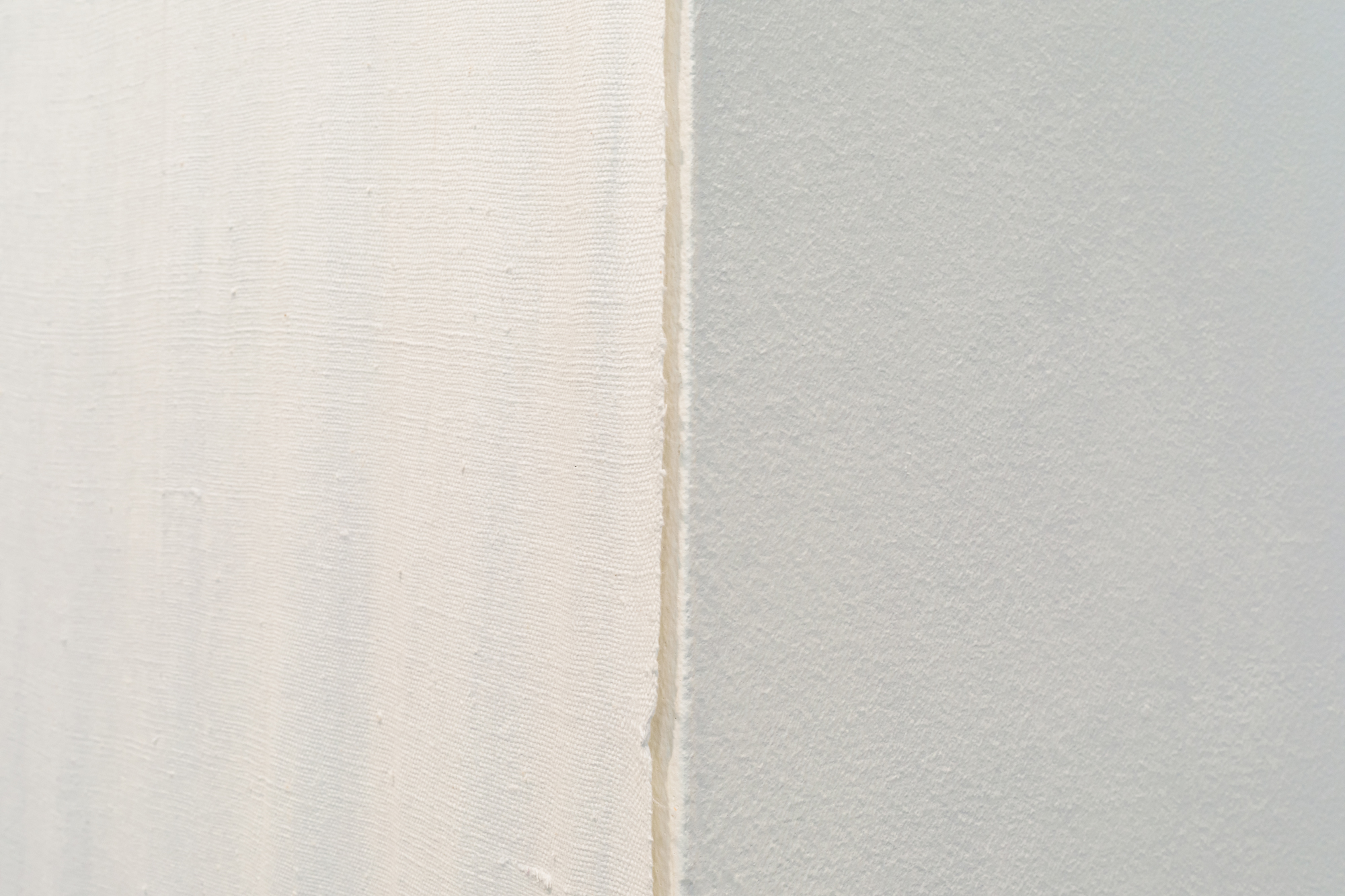
Untitled, bleached khadi cotton fabric from the Chandrakanta Lalitmohan production company in Islampur, Murshidabad, India. On Surfaces and Structures, Coalmine, Winterthur, 2025. Photo: Guadaloupe Ruiz.
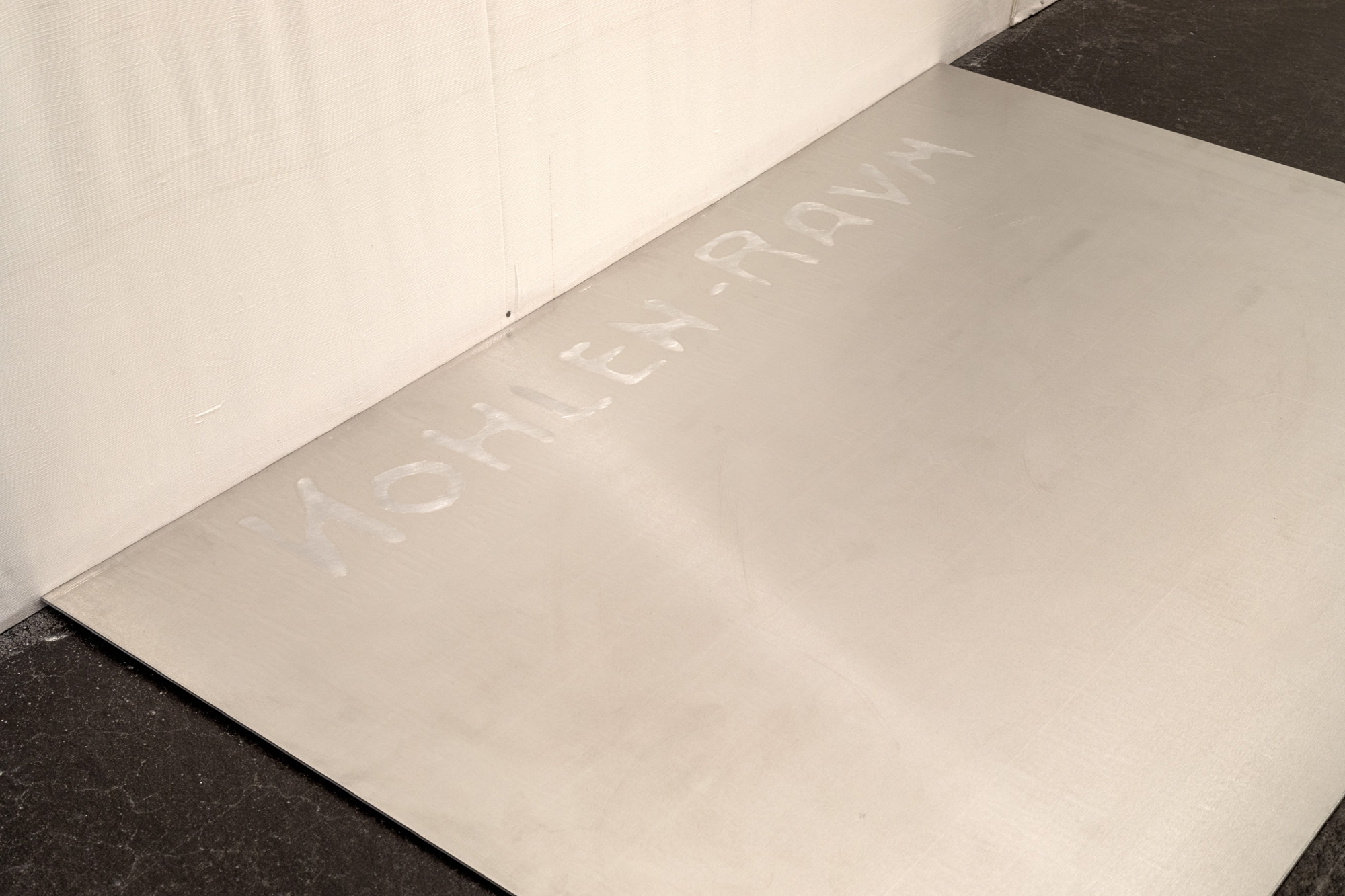
Installation view The House, aluminum plates with room designations, On Surfaces and Structures, Coalmine Winterthur. Photo: Guadaloupe Ruiz.
seeping in
Performance Video
In her video work seeping in, Stefanie Knobel expands on the tension between the Volkarthaus, its history, and the (own) body. It is located in the representative atrium of the Volkarthaus on the ground floor. The video combines a sequence of movements in the exhibition space with a text addressed by the artist to cotton, in which she takes up the fundamental importance of cotton for continental Europe as capital and thus names the capital entanglements that extend into cultural institutions—into the so-called “neutral” white cube — and into her own white body. The artist's performance is analogous to a tentative moment of questioning, in which “the body writes with the body.” Stefanie Knobel follows a specific grammar that draws on past performances and is formed from the movements of textile workers, textile machines, and the structure of her own body. The movements result from an internal physical compositional process in which the artist addresses specific parts of the body. She rubs against the hand-woven fabric, hesitantly, searching, vertically and horizontally, up to the ceiling. “I enter into a dialogue with the cotton, but I also seek contact with the White Cube as a ‘value-producing apparatus’. My movements are controlled by the hyoid bone, which is connected to hearing and thus, for me, to attentive listening,” is how the artist describes her approach.
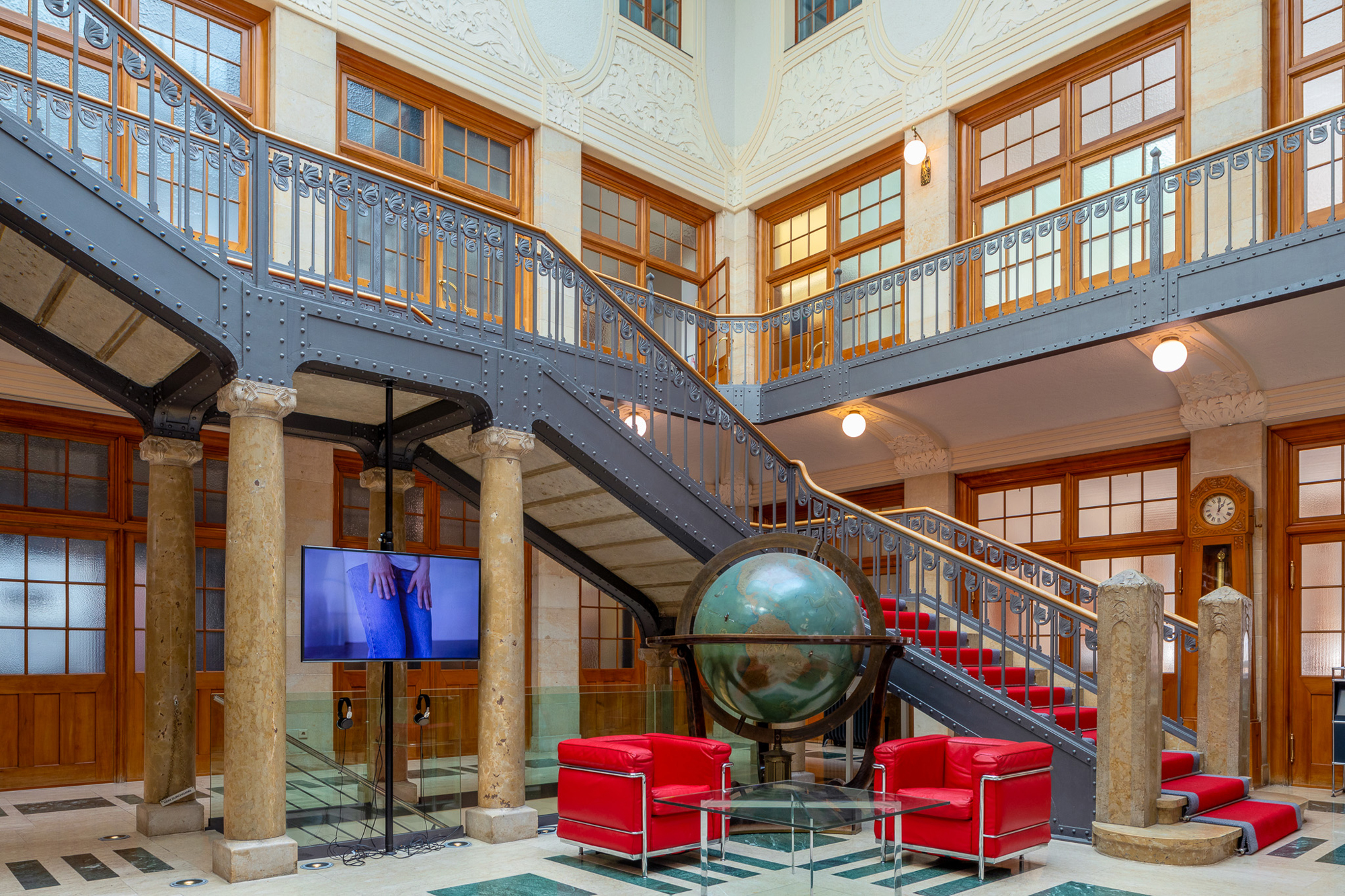
Installation view seeping in, On Surfaces and Structures, 2025. Photo: Guadaloupe Ruiz.
seeping in, On Surfaces and Structures, 2025. Camera: Carlotta Holy-Steinemann
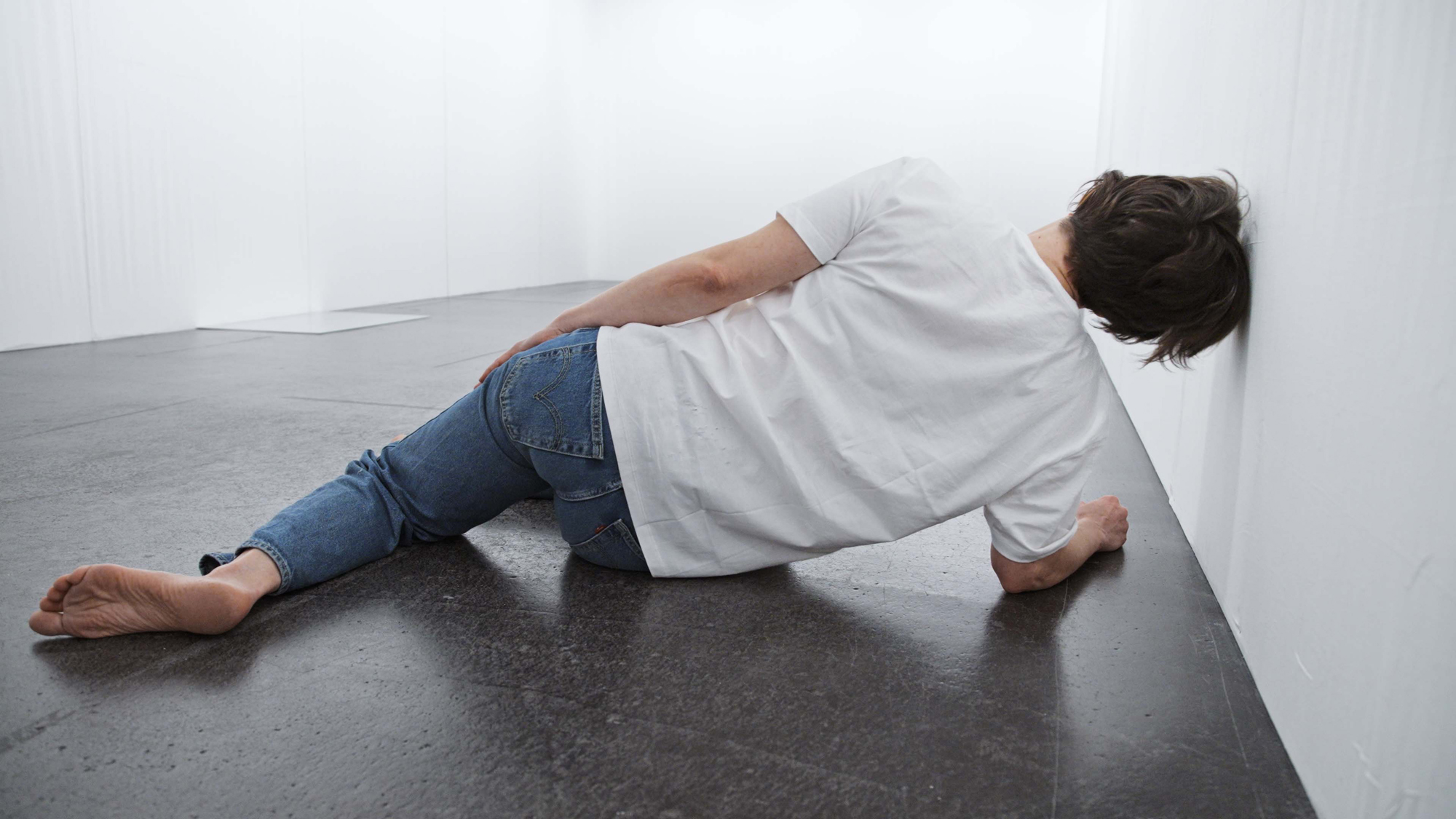
Videostill seeping in, On Surfaces and Structures, 2025.
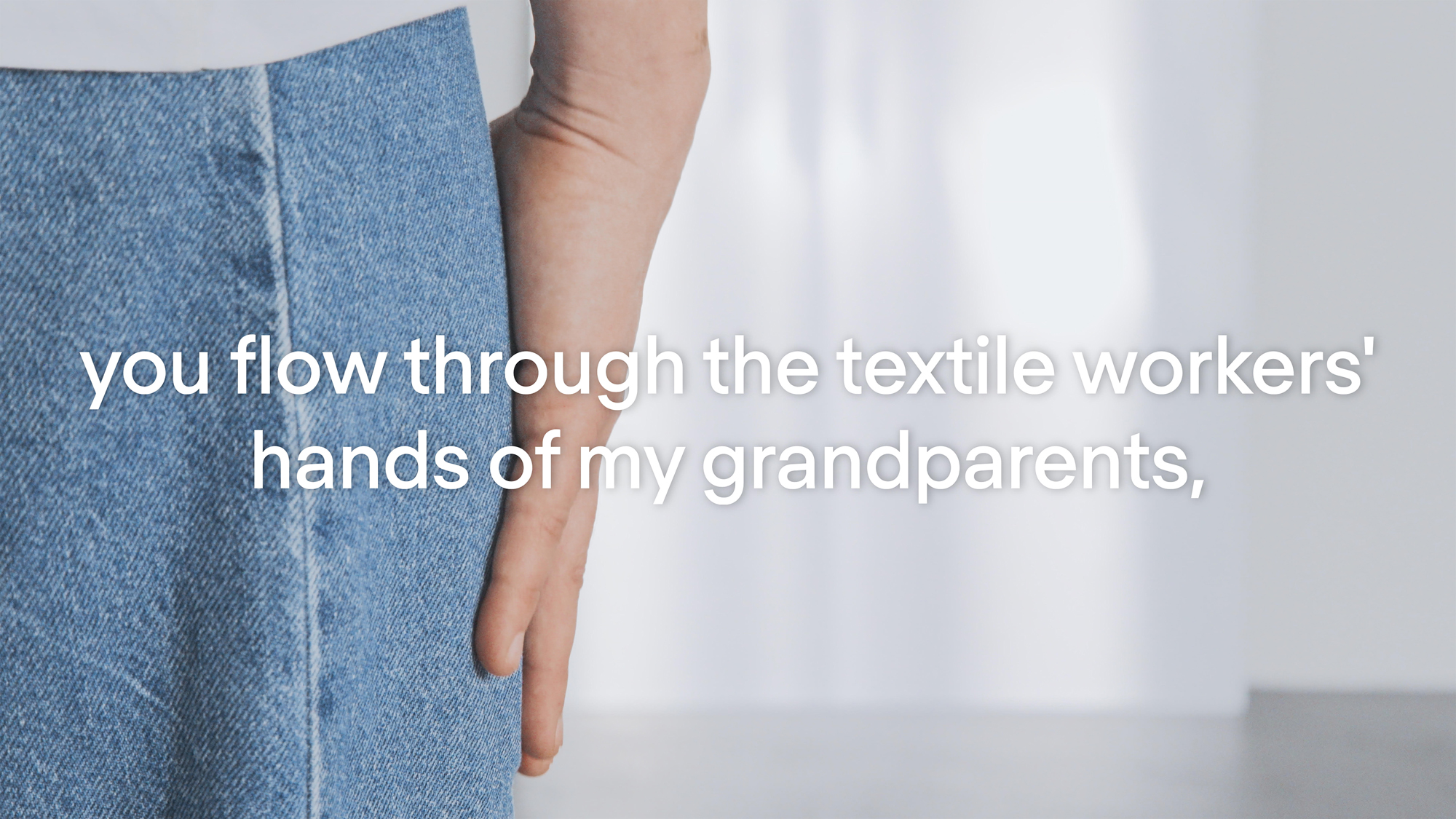
Videostill seeping in, On Surfaces and Structures, 2025.
seeping in, 2025
Video, color, sound, 8.23 minutes, loop
Director and performance: Stefanie Knobel
Dramaturgical support for movement: Jessica Huber
Camera: Carlotta Holy-Steinemann
Editing: Laura Rodriguez Pérez
Sound mixing/mastering: Vidyanand Bhaskar
Color grading: Patrischa Freuler
Costume: Karolin Braegger
Video, color, sound, 8.23 minutes, loop
Director and performance: Stefanie Knobel
Dramaturgical support for movement: Jessica Huber
Camera: Carlotta Holy-Steinemann
Editing: Laura Rodriguez Pérez
Sound mixing/mastering: Vidyanand Bhaskar
Color grading: Patrischa Freuler
Costume: Karolin Braegger
A Cotton Conversation
Printed Conversation
A final part of the exhibition On Surfaces and Structures is a conversation between Stefanie Knobel and the artist Samrat Banerjee (A Cotton Conversation, 2025). In it, the two talk about the economic and cultural significance of cotton from their respective perspectives and experiences. They also question the extent to which Swiss trading companies were able to profit from the global colonial economic order of the time and how colonial narratives continue to have an impact today, in India and in Switzerland.
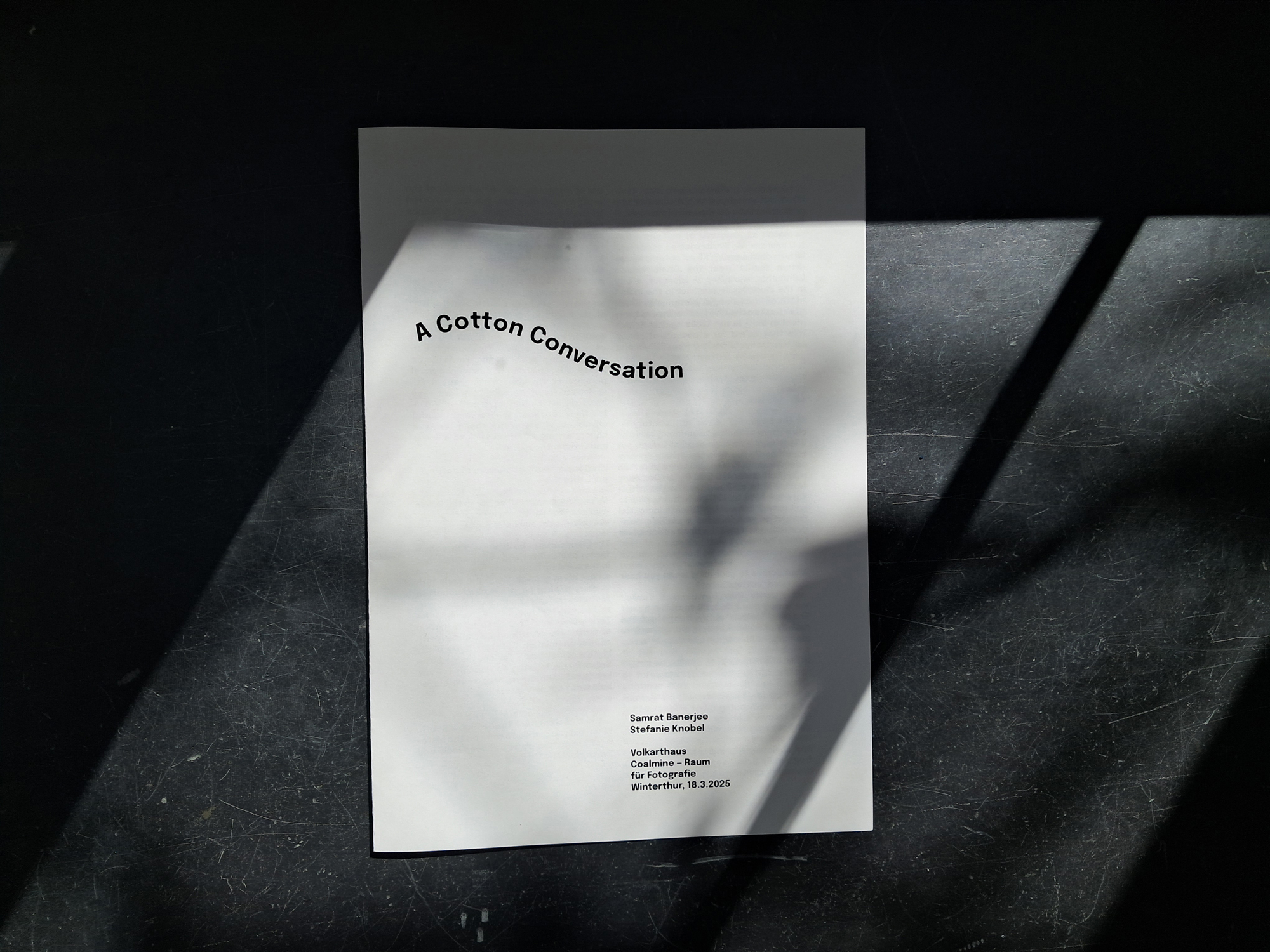
A Cotton Conversation, 2025. Photo: Stefanie Knobel
A Cotton Conversation, 2025
Text by Stefanie Knobel and Samrat Banerjee
Graphic design: Angela Wittwer
Text by Stefanie Knobel and Samrat Banerjee
Graphic design: Angela Wittwer